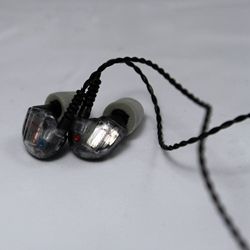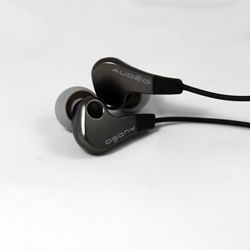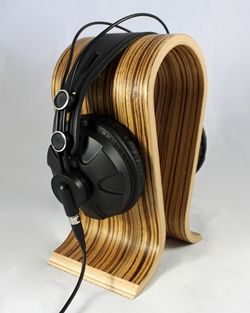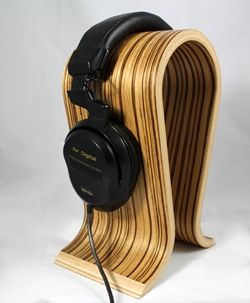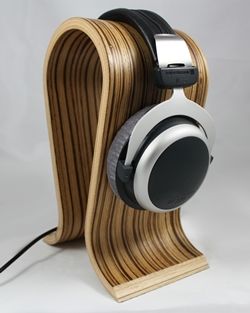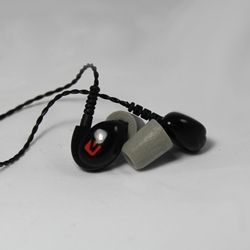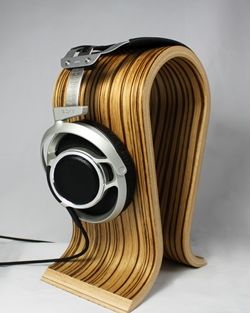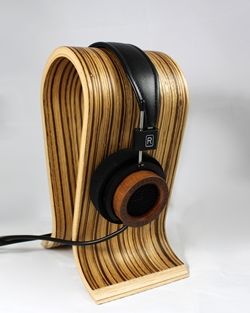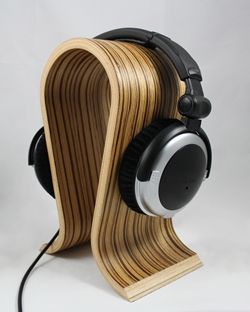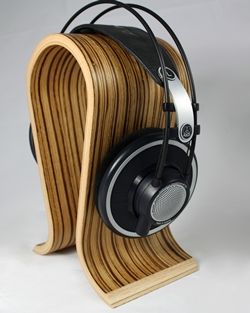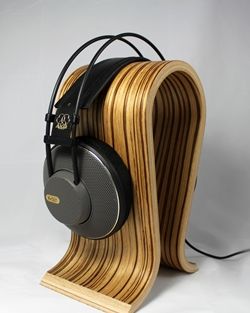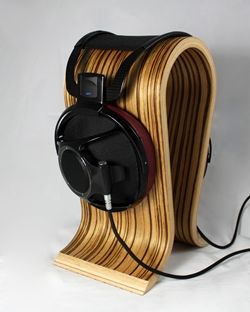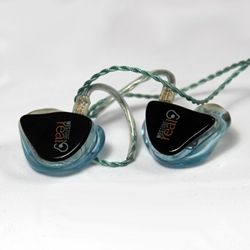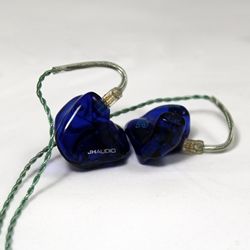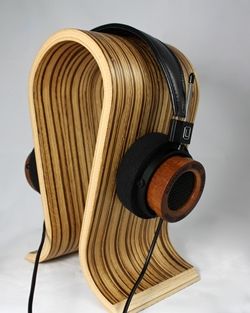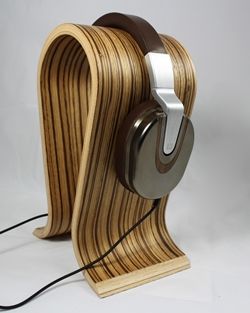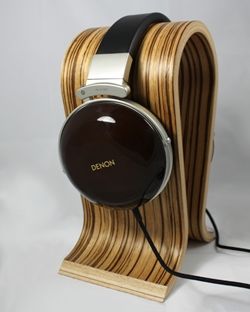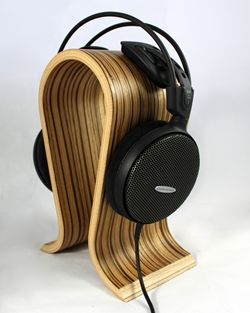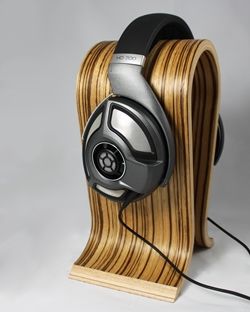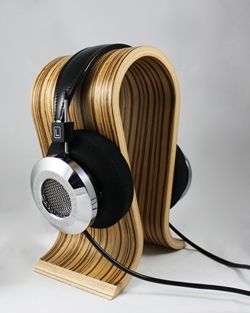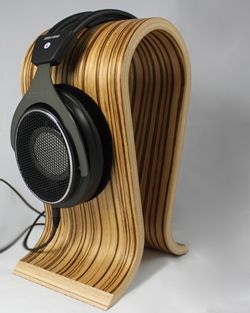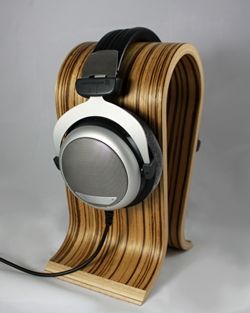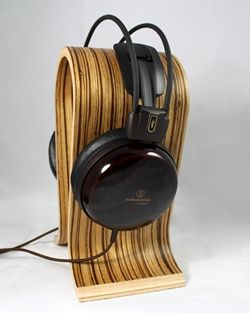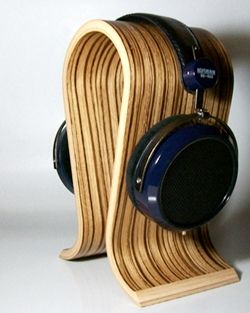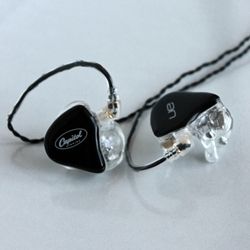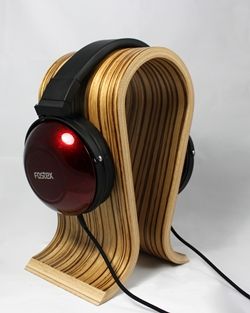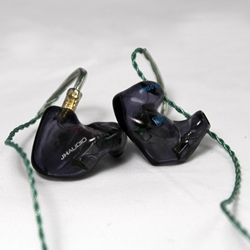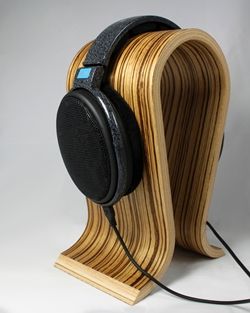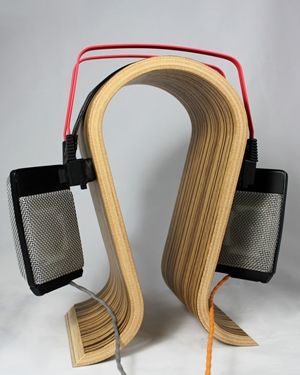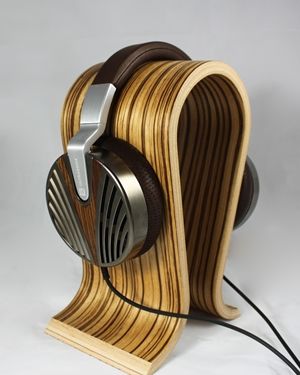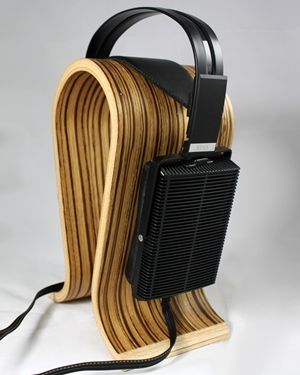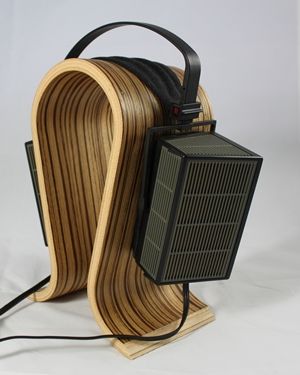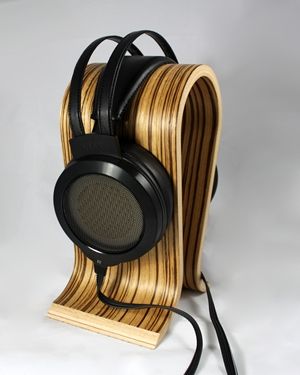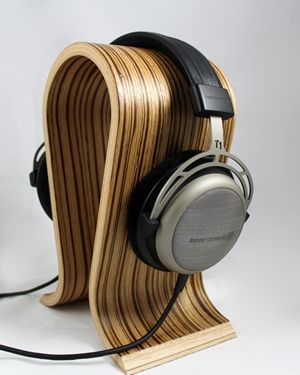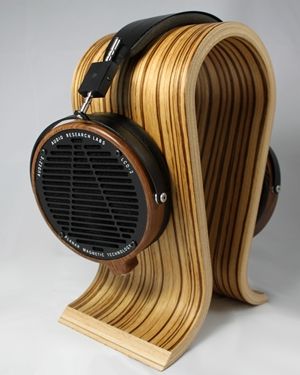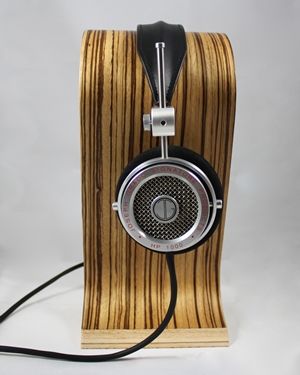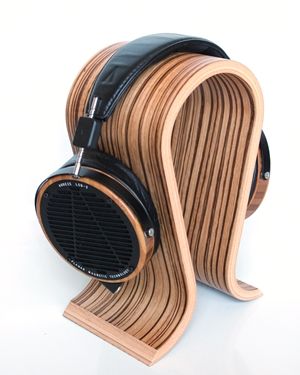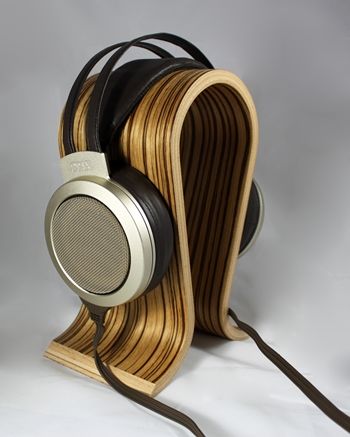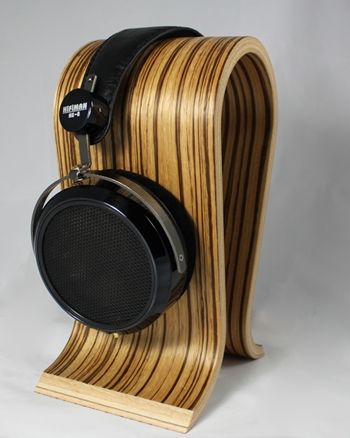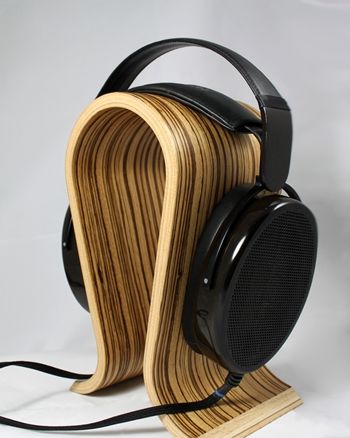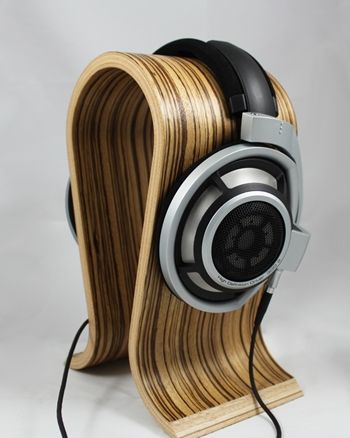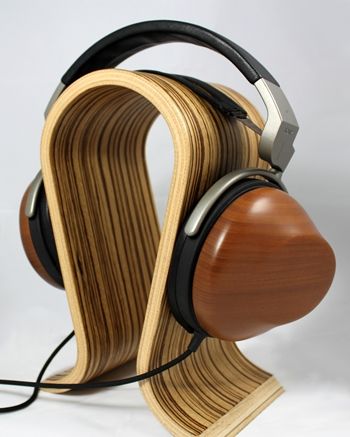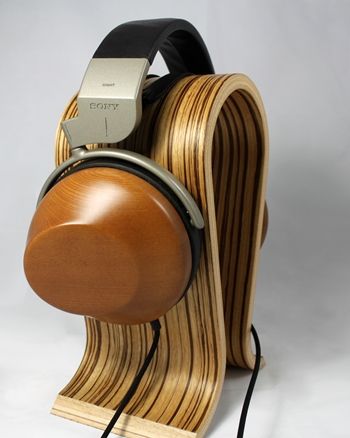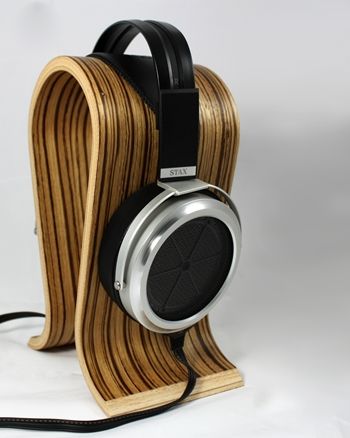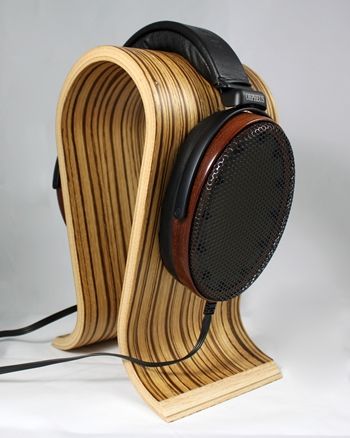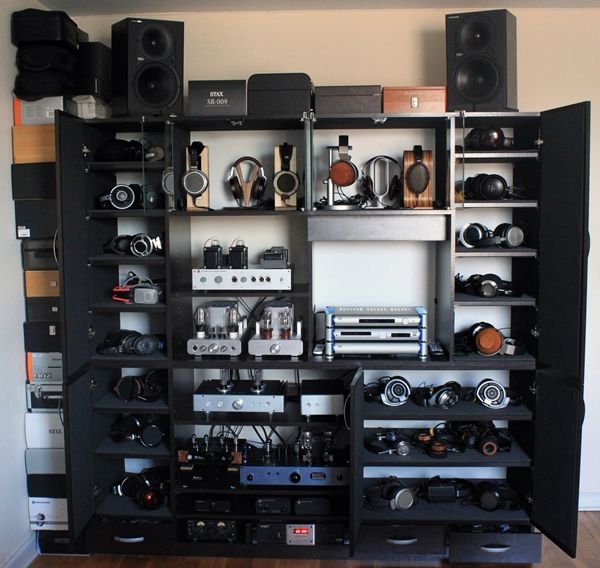DavidMahler
Headphoneus Supremus
- Joined
- Jul 8, 2007
- Posts
- 4,124
- Likes
- 354
THE BATTLE OF THE FLAGSHIPS
[size=0.85em]
My quest to find the greatest headphone ever made!
by David Solomon
[/size]
[size=0.85em]
TABLE OF CONTENTS
PREAMBLE
- ABOUT THIS REVIEW
- ABOUT THIS REVIEWER
- BEING @ HEADPHONES.COM
THE GEAR
- SOURCE
- AMPS
- ODDS & ENDS
50+ HEADPHONES COMPARED
TL;DR & CHARTS (spoiler alert)
- EPILOGUE
- MUSIC: CDs Used For The Evaluation
- FINAL THOUGHTS & THANK-YOU'S
The following headphones are reviewed in this evaluation...
Please feel free to click on any model name to skip right to its reviewAKG: |
K501 |
K702 |
K1000 |
ALESSANDRO: |
MS Pro |
AUD ÉO: |
PFE-232 |
AUDEZ'E: |
LCD-2 (rev. 1) |
LCD-2 (rev. 2) |
LCD-3 |
AUDIO-TECHNICA: |
ATH-AD900 |
ATH-W3000ANV |
ATH-W5000 |
BEYERDYNAMIC: |
DT 660 |
DT 770 |
DT 880 |
T1 |
DENON: |
AH-D950 |
AH-D7000 |
FOSTEX: |
TH900 |
GRADO: |
HP1000 (HP2) |
PS1000 |
RS1 |
RS2 |
HE AUDIO: |
Jade |
HIFIMAN: |
HE-6 |
HE-400 |
HE-500 |
JH AUDIO: |
JH13 |
JH16 |
KAM: |
HP1 |
SENNHEISER: |
HD600 |
HD650 |
HD700 |
HD800 |
HE90 (Orpheus) |
IE 8 |
SENSAPHONICS: |
2X-S |
SHURE: |
SE530 |
SE535 |
SRH1840 |
SONY: |
MDR-R10 (bass-heavy) |
MDR-R10 (bass-light) |
MDR-SA5000 |
Q010-MDR1 (Qualia 010) |
XBA-4 |
STAX: |
SR-007 MkI (Omega 2 MkI) |
SR-007 MkII (Omega 2 MkII) |
SR-009 |
SR-507 |
SR-Omega |
SR-Sigma |
ULTIMATE EARS: |
Custom In-Ear Reference |
ULTRASONE: |
Edition 8 Limited Edition |
Edition 10 |
HFI-700 |
WESTONE: |
ES5 |
UM3X |
Westone 3 |
Westone 4 |
MANUFACTURER:
MODEL
[/size]
[size=0.85em] [/size]
PREAMBLE
[size=0.85em]
*Back To The Index
Some opening words and thoughts...
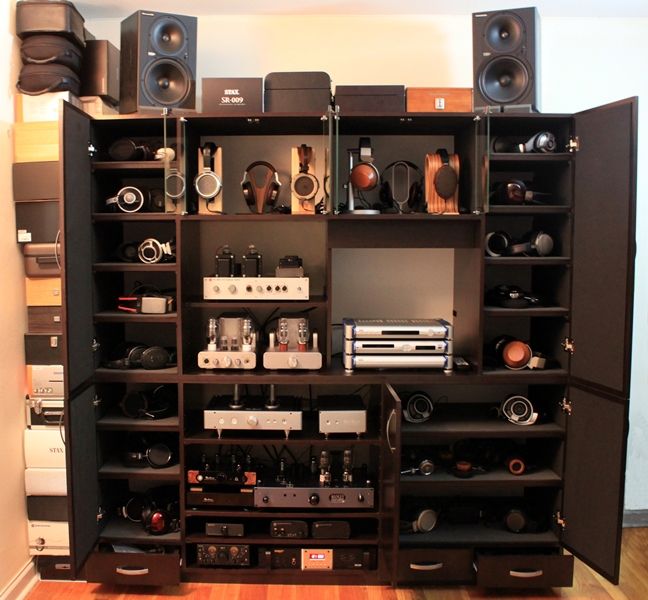
*Back To The Index
[/size]
ABOUT THIS REVIEW
[size=0.85em]*Back To The Index[/size]
[size=0.85em] [/size]
[size=0.85em]This review is an attempt to compare and contrast all the headphones that are presently in my personal collection. The sentiments expressed herein are based on my own personal experiences with the headphones. I in no way intend for this review to be perceived as anything more than one audio enthusiast's personal opinion. I did not use any equipment other than my ears to measure the performance of the various headphones.[/size]
[size=0.85em]The review itself involved several hundreds of hours of critical listening. The basic method of comparison involved a considerable amount of flipping back and forth between headphones / amps / songs while writing shorthand opinions as I listened. I have lived with the majority of the headphones listed for a year or more. Some of them, I have lived with for multiple years or even a decade +. A few of these headphones have only been in my possession for a few months, but I have made sure to allow for a minimum of 50 hours of critical listening time before formulating any final opinions.[/size]
[size=0.85em] [/size]
[size=0.85em]The majority of the headphones included in this review are flagship models or were considered a flagship model at some point. I did not include any headphone which was not in my personal collection because I wanted to avoid all biases related to listening-time and possible favoritism. I was hesitant to include in-ear-monitors (IEMs) in the ranking as I have a preference for [/size]
[size=0.85em]full-size headphones which not everyone necessarily shares. However, ultimately I decided to include IEMs in the ranking as they constitute a sizeable portion of my collection and listening time.[/size]
[size=0.85em]
![size]](http://i1342.photobucket.com/albums/o777/davidheadphones/Fig3StaxandUltrasone_zpsee51e5b0.jpg[size=11.818181991577148px][/size])
[size=0.85em]The headphones are ranked on performance alone. Each headphone included in this ranking will have its own spotlighted review. The review will begin with some personal thoughts about the headphone or perhaps a brief retrospective. Following these opening thoughts will be two sections labeled "STRENGTHS" & "WEAKNESSES" respectively. These two sections will focus on the positive and negative aspects of the headphone's performance and construction. I have attempted to discuss numerous aspects of the headphone and I have listed each aspect in approximate order of significance to me. Each bulleted description will begin with a keyword (or keywords) in order to appeal to those who do not wish to read the entire description, but who still want to understand my basic impression of the headphone.[/size]
[size=0.85em] [/size]
[size=0.85em]I have refrained from using a number system to grade different aspects of the headphones for the simple reason that I feel it may be misleading in this case. Most of these headphones are so outstanding in their performance that the number system may not ultimately reflect my opinion quite so accurately.[/size]
[size=0.85em]
![size]](http://i1342.photobucket.com/albums/o777/davidheadphones/Fig4rightshelf_zpsd3b5cc4b.jpg[size=11.818181991577148px][/size])
[size=0.85em]Furthermore, some of the things which I consider to be a "strength" may not be a strength for everyone. For example, your listening preferences may differ from my own or you may have a different opinion regarding design. Conversely, some of things which I label as a weakness may not at all be what you consider to be a "weakness."[/size]
[size=0.85em] [/size]
[size=0.85em]Following the "STRENGTHS" & "WEAKNESSES" section is a section I have titled "ON THE FENCE." This section discusses aspects of the headphone's performance that I felt was good in some ways, but in need of improvement in other ways.[/size]
[size=0.85em] [/size]
[size=0.85em]The "FOR THE PRICE" section is where the headphone is graded on its price-to-performance ratio. I did not use this grade as a factor in the ranking of the headphone's performance. Headphones with a grade of an A- or better are ones that I consider to be an exceptional value. Headphones with a grade of B- to B+ are a good value although there may be better options for the same price. Headphones with a grade of C- to C+ are headphones that I feel do not constitute their asking price based on the competition. Headphones with a grade of D or lower are headphones that I feel are priced disproportionately to their performance level. A low grade does not mean that I dislike the performance of the headphone. What it does mean however is that for a fraction of the price, one can get close-to or better performance from an alternative headphone.[/size]
[size=0.85em] [/size]
[size=0.85em]"QUICK CHECK" is the final section. This section is merely a quick run-through of the headphones' specs, design, status, etc. The following key may help provide better insight into my shorthand designations:[/size]
- DESIGN refers to whether the headphone is full-size, on-ear or in-ear.
- DRIVER refers to the type of transducer employed.
- IMPEDANCE refers to the nominal impedance rating of the headphone measured at 1Khz
- ISOLATION refers to the headphone's ability to passively eliminate outside noise and prevent sound from leaking out of the headphone. I did not examine any active noise canceling headphones in constructing this review.

- AMPLIFICATION refers to whether or not the headphone benefits from, requires or does not need an amplifier for operation.
- MY PREFERRED AMP/S refers to the amp/s which I found to be most synergetic with the headphone in question.
- SOUNDS BEST WITH refers to the genre/s of music which I feel the headphone excels with.
- CABLES USED refers to the cable/s which I used in evaluating the headphone's performance. The designation "stock" refers to the original unmodified cable that shipped with the headphone.
- REVISIONS KNOWN refers to whether or not the manufacturer made specific design changes to the headphone during the course of its production.
- FLAGSHIP STATUS refers to whether or not the headphone in question ever held the designation of "flagship." Most of the headphones listed were at one time the flagship of their respective manufacturer's product line. If a headphone is currently the flagship of its respective manufacturer, I designate this with "Currently Is." If a headphone was once a flagship, but has been superseded, I designate this with "Once Was." If a headphone was once a flagship, but was produced in extremely limited quantities, I designate this with "Limited Production Flagship." If a headphone is / was the flagship of a specific product-line, I specify this with the designation "Specific To Product Line." And finally, if the headphone was never intended as a flagship from the manufacturer, then I specify this with the designation "Not Applicable."
- PRODUCTION STATUS AS OF 2012 refers to whether or not the headphone is still currently in production.
- COST refers to the approximate price which the headphone sells for at the time that I write this review. All amounts are shown as USD.
[size=0.85em]*Back To The Index[/size]
ABOUT THIS REVIEWER
[size=0.85em] *Back To The Index
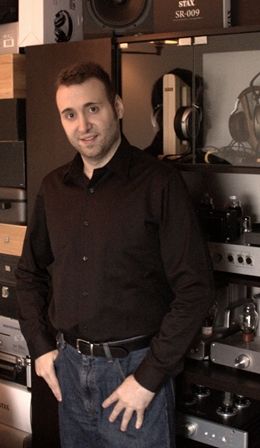
In case you weren't already aware, my name is David. I am 29 years old and have resided in New York City all of my life. I took an interest in music before I was even able to talk and it was discovered that I had perfect pitch when I was a young child. I play a variety of instruments including piano, guitar, bass, and drums. I sing as well. My fascination with audio gear developed out of my desire to hear as many nuances as possible from the music I loved. I acquired my first CD player (a Sony boom-box) as a gift from my parents for my 8th birthday. At that age, I was fascinated by the concept that a CD had music somehow stored inside of it.
In my early teens, I began a lifelong fascination with headphones. I immediately identified with the intimate sonic presentation that headphones provided and I recognized the amount of detail that I was able to hear from them. While working at a high-end audio store, I began to explore the functionality of the mixing console. Eventually, the recording and mixing process became an integral part of my life. I completed a degree in sound engineering from the Institute of Audio Research in 2001. In the years following, I worked both as an audio engineer and as a session musician for hire. During this time, I had the opportunity to work with many musicians and industry professionals who I admired and would ultimately learn from.
In 2007, I joined the Head-Fi community. I had never been a part of an online community prior to joining Head-Fi, and thus the concept of a message board or forum was foreign to me at the time. I had already been frequenting the site as a visitor for close to a year, but it was my eagerness to ask specific questions regarding the construction of custom-molded in-ear-monitors which served as the motivation I needed to proceed with registration.
Of course, many of you know that I am currently the "headphone guru" at headphones.com. For the tremendous role that the Head-Fi community played in my acquisition of this job, I am eternally grateful. I see this review partially as a thank you to the whole of the community which has enriched my life in a very personal way.
Lastly, I will talk a bit about my listening preferences and personal music taste. I don't have just one type of sound that I look for from headphones. I can enjoy a fun-sounding headphone as much as a more neutral/analytical headphone. A lot depends on which music I am listening to, but I usually tend to value transparency over all other aspects of sound.
My music tastes are pretty far-reaching. The core of my vast collection (approximately 12,000 CDs) of music can be divided into three genres: Classical / Jazz / Rock. Regarding classical music, I am a huge fan of Mahler (hence my user name), Brahms, Mozart, Sibelius, Shostakovich, Dvorak, Bartok, Ravel, Debussy, Bach, Beethoven, Schubert, Schumann, Chopin…the list can go on for pages. Regarding jazz, I am a huge fan of Keith Jarrett, Chick Corea, Charlie Parker, Charles Mingus, Herbie Nichols, Louis Armstrong, Miles Davis, Wayne Shorter, Branford Marsalis, Dave Holland, Pat Metheny, Duke Ellington, Thelonious Monk...and again the list can go on for pages. Regarding rock music, I am a huge fan of The Beatles, Joni Mitchell, Elliott Smith, Genesis, Steely Dan, Neil Young, Radiohead, Jeff Buckley, Nirvana, Led Zeppelin, Bob Dylan and many others.
For a complete listing of the CDs used in this headphone evaluation please see MUSIC: CDs Used For The Evaluation
*Back To The Index[/size]
BEING @ HEADPHONES.COM
[size=0.85em] *Back To The Index
I am far from the first headphone hobbyist to join the headphone industry professionally, but I wanted to say a few words about my experience in the field thus far. Initially, I had a fear that witnessing the industry from the inside out would corrupt my enjoyment of this hobby. I am happy to express that after being at headphones.com, my intrigue and appreciation for the hobby has only increased. Getting to know several manufacturers face to face has improved my understanding of their product lines. Furthermore, the people who I work with are a rare bunch who really understand, appreciate and respect our hobby. Walking into the office feels sometimes like entering my home. It's a good feeling!
I love getting calls from someone who says "oh by the way, I'm from Head-Fi." It's the best part of the day for me. For those who may not know, I am always reachable via email both at davids@headphones.com or via PM me here on Head-Fi. If you write me, I will respond to your email. No question is too silly / no comment is too insignificant!

I began writing this review before I started at headphones.com - yes it has taken well over a year to complete! This review is a largely-expanded version of the "20 Headphones Compared" thread which I did in 2010. Initially, it was my intent to update that original review, but as my collection continued to grow and my opinions began to reshape as a result, I felt that it would be more serviceable to expand it into an entirely new project.
*Back To The Index[/size]
THE GEAR
[size=0.85em] *Back To The Index
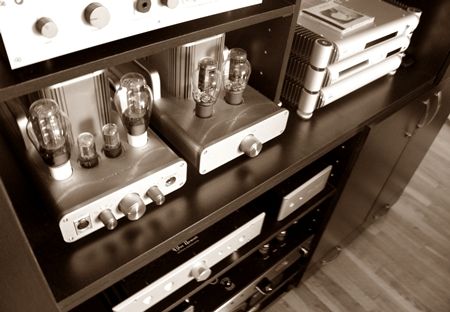
I used to obsess over which component in the system was most important to the overall fidelity of the sound. Ultimately, I found that with every upgrade that I made to a single component in my system, my perception of every other component was affected (not always for the better). I personally don't feel that it is necessary for one to use more than a singular source in their audio rig; one exceptional digital-to-analog-converter (aka DAC) or turntable setup is truly all that is needed. However, if one has multiple headphones with different power needs and/or tonal balances, then one may wish to have multiple amplifiers accessible.
The following is a list of the gear used in compiling this review:
SOURCE
MSB TECHNOLOGY: Diamond DAC IV with the following upgrades:- Femtosecond Galaxy Clock
- Diamond Power Base
- Universal Media Transport
- Pro I2S Input
AMPLIFIERS
- HEADAMP: Aristaeus
- HEADAMP: Blue Hawaii Special Edition
- HEADROOM: Balanced Ultra Desktop Amp
- LAROCCO: PRII MkII
- MANLEY LABS: Neo Classic 300B
- MEIER AUDIO: Corda Move
- RAY SAMUELS AUDIO: Hornet
- RAY SAMUELS AUDIO: Tomahawk
- SPL: Phonitor
- TTVJ / MILLETT: 307A
- WOO AUDIO: Woo Audio 5
ODDS & ENDS
- SPEAKERS: Mackie HR-824 (Pair)
- POWER CONDITIONER: Monster Pro 3500 Surge
- SWITCH BOX: Gold Point SW2X-O
- INTERCONNECTS: A Pure Sound & ALO Audio
*Back To The Index
[/size]
SOURCE
[size=0.85em] *Back To The Index
The following are details and brief impressions of the gear used...
MSB TECHNOLOGY: Diamond DAC IV
I lived with the MSB Platinum DAC III for a number of years. In that time, it became the most trusted component in my system. The sound of the DAC III was the most lifelike I had ever heard from a DAC. There was no question in my mind that, if and when I would upgrade, I would stick with MSB.Turn the page a few years and enter the Diamond DAC IV. The sound of this DAC is so effortless; so
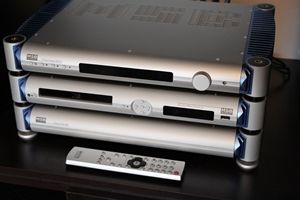
MSB offers an expensive state-of-the-art upgrade for their entire DAC line: the Femtosecond Galaxy Clock. With a jitter measurement of 77 femtoseconds, the Femtosecond Galaxy Clock is presently the most accurate clock in digital audio. Just for clarification purposes, a femtosecond equals one millionth of one billionth of a second. In this way, MSB Technology is truly on the cutting edge of digital audio. If you are serious about state-of-the-art sound and are looking for a no-holds-barred top-end DAC, then the MSB line deserves your highest consideration.
COST:
- DIAMOND DAC: $21995 (starting price pre-upgrades)
- FEMTOSECOND GALAXY CLOCK: $9950
- DIAMOND POWER BASE $4495
- UNIVERSAL MEDIA TRANSPORT: $3995
- PRO I2S Input: $995
*Back To The Index[/size]
AMPS
[size=0.85em]*Back To The Index[/size]
[size=0.85em] [/size]
[size=0.85em]
HEADAMP: Aristaeus
[size=0.85em]Sennheiser's HE90 Orpheus headphone is one of very few headphones which shipped with its own amplifier. This amplifier, known as the HEV90, was an electrostatic design, specifically intended by the manufacturer to be paired with the HE90. It was a gorgeous-looking vacuum tube amp with a built-in DAC module. Consequently, the title "Orpheus" is often synonymous with Sennheiser's complete flagship audio system, rather than just the headphone alone.[/size]
[size=0.85em] [/size]
[size=0.85em]The Aristaeus is a vacuum tube headphone amplifier designed by Kevin Gilmore (in partnership with HeadAmp Audio Electronics) to be extremely similar to the HEV90's amp section; the Aristaeus does not feature a DAC component. According to its maker, the Aristaeus's amplifier design is nearly identical to HEV90, although the power supply is improved upon. Another notable difference between the Aristaeus and the HEV90 is that the Aristaeus offers a Stax compatible headphone output in addition to the HE90 headphone output, whereas the HEV90 featured two outputs, both intended for the HE90 headphone.[/size]
[size=0.85em] [/size]
[size=0.85em]While the Aristaeus will work with a variety of electrostatic headphones, I use it almost exclusively to power my HE90 (Orpheus) - the headphone for which it was primarily intended. The only other headphones with which I regularly pair the Aristaeus is Sennheiser's own HE60 (Baby Orpheus) and HE Audio's Jade. My Aristaeus was built with a DACT stepped attenuator for volume control.[/size]
[size=0.85em] [/size]
[size=0.85em]TUBES USED: 12AX7/ECC83 (JJ Electronics: Stock)[/size]
[size=0.85em]COST: $4495[/size]
[size=0.85em] [/size]
[size=0.85em] [/size]
[size=0.85em]
HEADAMP: Blue Hawaii Special Edition (BHSE)
Like the Aristaeus, the Blue Hawaii Special Edition was designed by Kevin Gilmore. The BHSE is a hybrid solid state / vacuum tube electrostatic headphone amplifier. With an output voltage of 1600 peak-to peak, it is capable of driving even the most demanding Stax headphones, such as the Omega 2. My BHSE, in particular, exhibits a silver finish, and was installed with an Alps RK50 attenuator. I think it is among the best looking amplifiers in my rig. This amp's performance is breathtaking. However, the amp does run quite hot. In order to facilitate this, I have carved out a ventilation chamber which rests above the amplifier. Unfortunately, one cannot see this in the photographs.
[size=0.85em]TUBES USED: Mullard EL34 Quad (Stock)[/size]
[size=0.85em]COST:[/size]
[size=0.85em]
- AMP: $4995
- Alps RK50: $1000
[size=0.85em] [/size]
[size=0.85em]
HEADROOM: BALANCED ULTRA DESKTOP AMPLIFIER (BUDA)
[size=0.85em]The BUDA is a solid state balanced amplifier which offers a single pair of balanced headphone outputs and two pairs of single-ended headphone outputs. It also offers a pair of preamp outputs. The front panel features a gain switch as well as a crossfeed switch. While I use the upgraded Desktop Power Supply, it may be a superfluous addition since the amp's stock power supply seems perfectly acceptable.[/size]
[size=0.85em] [/size]
[size=0.85em]COST:[/size]
- AMP: $1599
- POWER SUPPLY: $549
[size=0.85em] [/size]
[size=0.85em]
LAROCCO: PRII MkII
[size=0.85em]The PRII MkII is a portable solid-state amp that has been long out of production. It was designed by Phil Larocco to serve as a reference-grade battery-operated headphone amplifier. One of its most impressive features is its bass contour control. Much of the design here has been implemented into Triad Audio's L3, also designed by Phil Larocco.[/size]
[size=0.85em]COST: $500 (estimated) [/size]
[size=0.85em] [/size]
[size=0.85em]
MANLEY LABS: NEO CLASSIC 300B
[size=0.85em]The Neo Classic 300B is a beautiful sounding amplifier. While it offers a variety of single-ended outputs, I primarily use this amp for headphones. This is my go-to amp for the Sennheiser HD800 and Beyerdynamic T1. The amp features a switch for the option to bypass the transformers when using the main line-out. However when in headphone-listening mode, you must use the transformers. The sound of this amp is slightly slow and lush, yet romantic and beautiful; it is the best classic tube sound that I have yet heard.[/size]
[size=0.85em] [/size]
[size=0.85em]TUBES USED:[/size]
- 300B Pair (Sophia Electric Princess: Upgrade)
- 6SL7GT Pair (Electro-Harmonix: Stock)
- 5U4GBEH Pair (Electro-Harmonix: Stock)
- OD3 Pair (NOS JAN USA: Stock)
- $5850 (Base Price)
- $450 (Upgrade Tubes)
[size=0.85em] [/size]
[size=0.85em]
MEIER AUDIO: Corda Move
[size=0.85em]The Corda Move is a discontinued portable headphone amp designed by Jan Meier. The model which I own dates from 2008; it is the original production model. I consider it to be a good value, originally having discovered it in Skylab's magnificent portable amp roundup thread. The Corda Move has since been superseded by Meier's Corda 2Stepdance.[/size]
[size=0.85em]COST: $150 (estimated) [/size]
[size=0.85em] [/size]
[size=0.85em]
RAY SAMUELS AUDIO: Hornet & Tomahawk
[size=0.85em]The Tomahawk was my first venture into the world of portable amps, and my acquisition of the Hornet followed soon thereafter. I appreciate the functionality and rugged construction of Ray Samuel's amplifiers. Not only was I a fan of these two amplifiers, but I was also impressed that I was always able to reach Ray very easily. My business experience with Ray Samuels Audio led me to several other RSA purchases, including the HR-2, Raptor, P-51 Mustang, and SR-71A. I have since parted with these four amps, but I still think highly of each one of them. Ray was also kind enough to allow me the chance to spend some time with the B-52; I enjoyed it very much. I have a great respect for Ray as an amp designer and businessman.[/size]
[size=0.85em]COST: [/size]
- Hornet: $370
- Tomahawk: $295
[size=0.85em]
SPL: Phonitor (Black)
[size=0.85em]The Phonitor is the best sounding solid-state amplifier that I have used. It is a very neutral sounding amp and it powers a variety of headphones exceptionally well. The SPL Auditor features the same basic design as the Phonitor, but without the added crossfeed, centering and channel-soloing features. For those on a more limited budget, the Auditor is a great choice. On a side note, I enjoy summing the channels to mono and then putting one of the channels out of phase. hehe
 [/size]
[/size][size=0.85em]COST: $1934 [/size]
[size=0.85em] [/size]
[size=0.85em]
TTVJ / MILLETT: 307A
[size=0.85em]

Of all the headphone amplifiers that I own, the 307A is probably the one that I use most. It has a very neutral and natural sound. In my opinion, Pete Millett is one of the pioneers of the field. Only 12 units of the 307A were made before it was discontinued. However, Pete Millett and Todd The Vinyl Junkie have teamed up once again to produce an amp that is quite similar in design: The Pinnacle. I had the opportunity to review the Pinnacle. It is a wonderful amp. The most significant differences between the 307A and the Pinnacle are fourfold. Firstly, the transformers used in the Pinnacle's design are more expensive and, according to the amp builder himself, far superior. Secondly, in order to achieve a lower noise-floor, the power supply is separated from the amplifier section. Thirdly, the Pinnacle uses the PX4 as its output tube in place of the 307A tube. Fourthly, the Pinnacle has built-in preamp functionality while the 307A does not. Minus these differences the 307A and the Pinnacle are virtually the same amp design. Both offer balanced and single-ended inputs and outputs; both are exceptionally neutral with a slight tube-y roundness. I highly recommend both the 307A and the Pinnacle!
[size=0.85em]TUBES USED:[/size]
- 307A Pair (Sylvania)
- 7N7 (Westinghouse: Stock)
- 5V4GA (Tung Sol: Stock)
[size=0.85em]
WOO AUDIO: Woo Audio 5
[size=0.85em]As with the Manley Labs Classic Neo 300B, the Woo Audio 5 employs the 300B as its output tube. Also, like the Manley Labs Classic Neo 300B, the Woo Audio 5 exhibits a wonderfully fluid midrange. However, the decay of the Woo Audio 5's sound is not as slow as the Manley's. Consequently, the Woo is not as lush or romantic as the Manley, but instead, more accurate and even-tempered. The Woo Audio 5's standard headphone output features a high/low impedance option in order to better accommodate each individual headphone's power needs. [/size]
[size=0.85em] [/size]
[size=0.85em]One of the most significant features of the Woo Audio 5 is its K1K output, which was designed specifically in order to meet the power demands of AKG's K1000 headphone. This output pumps 8 watts per channel into 140 ohms impedance. However, since the release of this amp, other headphones have been introduced which are equally (if not more) demanding than the K1000, i.e., the HE-6 by HifiMan. The Woo Audio 5 powers the HE-6 brilliantly; it is presently the only amp with which I pair the HE-6. This is one of my favorite pairings. Lastly, the Woo Audio 5 can also function as a speaker amp, as it features speaker outputs in the rear panel. [/size]
[size=0.85em] [/size]
[size=0.85em]*Woo Audio also offers the Woo Audio 5 without the K1K and speaker outputs. This version is known as the Woo Audio 5 LE.[/size]
[size=0.85em] [/size]
[size=0.85em]TUBES USED:[/size]
- 300B Pair (Sophia Electric Princess: Upgrade)
- 6SN7GTB Pair (RCA: Stock)
- 5U4G Pair (Sovtek: Stock)
- $3150 (Base Price)
- $150 (Teflon Tube Socket Upgrade)
- $450 (with Upgrade 300B Tubes)
[size=0.85em]
SINGLE POWER AUDIO: SDS-XLR
I've crossed this amplifier out on purpose. I own this amp. But one would never know it. It's not in my home. Not long before Single Power Audio was put out of business (as a result of fraudulent activity) the owner hand-delivered the amp to my residence - Yes hand-delivered! About a week into ownership, one of the channels started to short. I promptly shipped it back to the manufacturer for a repair. After the manufacturer diagnosed that the problem was a blown capacitor, I expected that the fix would be quick and easy. Unfortunately, my amp was never returned and I would never hear back from the company again. I was never able to track down the owner, and as such, I was never able to retrieve the money I paid.
[size=0.85em]*Back To The Index[/size]
ODDS & ENDS
[size=0.85em] *Back To The Index
MACKIE: HR824 Mk2 (pair)
COST: $1399.95 (estimated)
MONSTER: Pro 3500 Surge
COST: $300
GOLD POINT: SW2X-O
COST: $572
Interconnects by A PURE SOUND & ALO AUDIO
COST: $2500 (estimated)
Now on to the core of this evaluation...
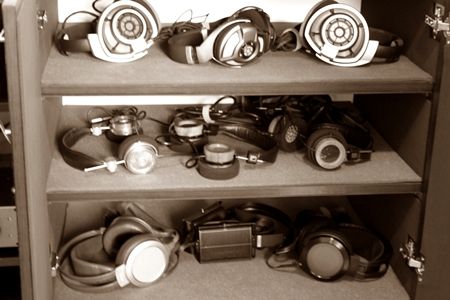
*Back To The Index[/size]
[size=0.85em] [/size]
[size=0.85em] [/size]
[size=0.85em] [/size]
50+ HEADPHONES COMPARED
[size=0.85em]
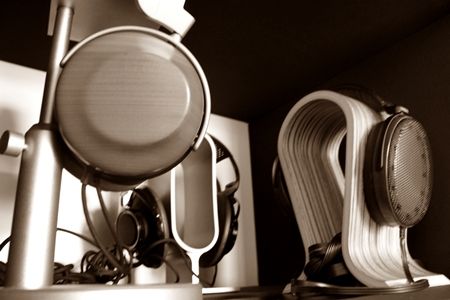
[/size]
#58 AUDIO-TECHNICA: ATH-W5000
[size=0.85em] *Back To The Index
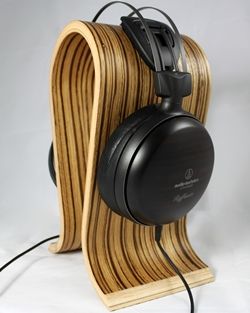
I purchased a pair of the ATH-W5000 in 2007. I was completely shocked by how poorly it performed. Today, it remains the only headphone that I have ever returned. A couple of years later, I was informed by a respected member of the community that he had encountered two different pairs of the ATH-W5000. According to him, the earlier one sounded defective, while the later one sounded a bit better. After I was given this information, I contacted the manufacturer to see if there was any record of changes made with regard to the production of the W5000. According to the manufacturer, there was no record of a production change and there were no documented defects.
However, I was convinced that the pair I had initially purchased was defective since so many people seemed to like the sound of the W5000. In 2010, I purchased the ATH-W5000 for a second time. It sounded about as bad as I remembered. The only way that I can even begin to appreciate its sonic presentation is at an exceptionally low volume level.
STRENGTHS
ATTRACTIVE: I still think this is the most beautiful looking headphone that Audio-Technica has ever made. Its striped ebony wood finish is even prettier to my eye than the cherry wood finish of the ATH-W3000ANV (Audio-Technica's newer and far greater flagship).
COMFORT: Audio-Technica's leather earpads are very soft. While I'm not a fan of the self-adjusting headband design, the ergonomic fit of the headphone allows the earpads to loosely encompass the ears, which is rather comfortable. I have a larger-than-average-size head. It is possible that one with a smaller head may find that the W5000 wears a bit too loosely.
STORAGE: The W5000 ships with a really wonderful carrying case. It looks like a hard plastic suitcase specifically designed for your headphones. The case features a wonderfully silky interior as well.
ISOLATION: The ATH-W5000 is one of a small handful of full-size closed-back headphones on my list. Because of its closed-back design, it offers some attenuation of outside ambient noise.
WEAKNESSES
SOUND: Normally, I would evaluate several distinct attributes of the sound in order to determine which are successful and which are in need improvement. In this case, I find that the sound is simply poor all around. It is a nasal, congested, non-transparent, bass-less, unnatural tone.
HEADBAND CONSTRUCTION: I'm not a fan of Audio-Technica's self-adjusting headband design. I think it is flimsy and easily breakable. While many of Audio-Technica's full-size flagships incorporate this headband design, I do wish this design was something they would abandon.
ON THE FENCE
LOW LEVEL LISTENING: The W5000 sounds drastically improved at lower volume levels. No, I'm not trying to be funny by saying "the closer I get to not hearing it, the better"
 . At exceptionally low listening levels, the sound broadens and becomes more natural.
. At exceptionally low listening levels, the sound broadens and becomes more natural.POWERING: Audio-Technica produced an amp specifically designed to power the W5000. It is known as the HA-5000. I am told by some owners of this pairing that the sonic results are stunning. I have never heard this pairing, so I do not know. In my experience, I have found that the W5000 never loses its nasal, unnatural character despite which amp I choose to pair it with. Of the amps I've used, I have found that it sounds best with the TTVJ Millett 307a, but it still does not sound particularly good.
CABLE: The W5000's cable is of a fairly high quality. However, I always prefer easily detachable cables. The W5000's cable is hardwired.
FOR THE PRICE
F
I won't be giving out too many F's in this evaluation. Unfortunately, the ATH-W5000 is just insufferably nasal sounding to my ears. The drivers sound as though they are being restrained. Perhaps if it were an open-back design, the sound would improve quite a bit. At its price, I feel that every other full-size headphone I have heard outperforms it by leaps and bounds.QUICK CHECK
- DESIGN: Full-Size
- DRIVERS: Dynamic
- IMPEDANCE: 40 Ohms
- ISOLATION: Some
- AMPLIFICATION: Recommended
- MY PREFERRED AMP: TTVJ Millett 307A
- SOUNDS BEST WITH: Low level listening
- CABLES USED: Stock
- REVISIONS KNOWN: None known to me
- FLAGSHIP STATUS: Once Was
- PRODUCTION STATUS AS OF 2012: In Production
- COST: $650-$1000 (estimated)
*Back To The Index
[/size]
#57 SENSAPHONICS: 2X-S
[size=0.85em] *Back To The Index
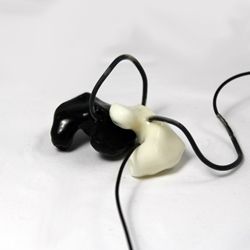
The 2X-S is a custom in-ear-monitor that incorporates two balanced armature drivers per ear in a single passive crossover design. It was the second pair of custom-fit IEMs that I ever purchased. I bought them almost immediately after I acquired the Ultimate Ears UE10 Pro. I had read several positive reviews about it, including that it offered the best noise cancellation and comfort of any customized in-ear. The shell of the 2X-S is made completely out of soft silicone material. Just that description alone sounded promising to me. The 2X-S is a solid offering in several ways. It is able to block out a tremendous amount of ambient noise and it is quite comfortable to wear for extended periods of time. However, when removing the earpieces from my ears, the flexible material actually manages to cause my ears discomfort. Finally, the 2X-S is just average with regard to sound quality.
STRENGTHS
AMAZING ISOLATION: Between the 2X-S and the Westone ES, I'm not sure which offers better passive noise reduction. These two in-ears are the best I have ever tried with regard to passive noise isolation. The 2-XS is truly astonishing with regard to the amount of ambient noise it is capable of attenuating.
FIT: Let me specify that by the word "fit" I do not mean comfort. The reason I state this is that the fit itself is essentially perfect. However, when I remove the earpieces from my ear, the silicone bends, causing my inner ear great discomfort.
SUPER PORTABLE: With regard to portability, nothing even comes close to IEMs. You can fit the 2X-S inside a small shirt pocket. Try doing that with an MDR-R10.
EASY TO DRIVE: Most IEMs are easy to drive. On the rare occasion that I use the 2X-S, I do not use an amplifier. I have used the 2X-S primarily with just my iPod.
SERIALIZED: As any customized item should be, the 2X-S is serialized.
WEAKNESSES NOT TRANSPARENT: I find the sound signature of the 2X-S to be extremely unnatural. Sadly, the sound is stained by a shrill metallic quality throughout the entire frequency spectrum.
IEMS' INHERENT SHORTCOMINGS: In my opinion, full-size headphones possess the ability to sound more natural than in-ear headphones. The reason I feel this way is that much like natural acoustic sound, sound waves that emanate from a full-size headphone travel through the entirety of the ear, rather than just the canal. To me, this sense of space makes for a more natural auditory experience. Not everyone agrees with me on this matter, but I stand by my assertion.
IEM SOUNDSTAGE: To my ears, the soundstage presentation that IEMs portray is lacking in realism. A lot of people happen to like it, but for me, it is not competitive with a full-size headphone's soundstaging ability.
TONALITY: I've found that throughout the frequency response here, there are odd peaks and dips. The bass is most definitely lacking in impact. The treble sounds slightly rolled off and brittle. The midrange presentation has its moments, however, the upper-mids sound odd and unnatural.
CABLE: Today, I believe that Sensaphonics offers a replaceable cable option. However, back when I ordered the 2X-S, I am pretty sure that the cable was only offered in a hardwired configuration. The cable on my 2X-S appears to be quite flimsy.
RESELL VALUE: When I first joined Head-Fi, I remember someone putting up a thread in the "For Sale" section in which they announced the sale of their custom-molded earphones. This thread turned out to be a joke. Reselling a custom-molded product was almost unheard of at the time. Today however, there are many companies which offer a refitting process that makes reselling custom-molded earphones an option. Still, be prepared to take a major hit should you resell them.
ON THE FENCE
IMAGING: All criticism aside, the 2X-S is actually decent at imaging. The instrument separation is enhanced by a rather smooth decay.
STORAGE: My 2X-S shipped with a hard plastic case and a vinyl zipper carrying pouch.
FOR THE PRICE
D
I feel that the 2X-S is extremely overpriced. The silicone material is quite effective at attenuating outside noise, but ultimately I find that every other in-ear-monitor listed in this evaluation is more natural sounding. Coming off the heels of my favorable UE10 purchase, I was greatly disappointed with the 2X-S when I first heard it. Five years later, I still have not yet warmed up to its sound signature.QUICK CHECK
- DESIGN: In-Ear
- DRIVERS: Balanced Armature
- IMPEDANCE: 27 Ohms
- ISOLATION: Extreme
- AMPLIFICATION: Not Necessary
- MY PREFERRED AMP: AMP: n/a (iPod without amp)
- SOUNDS BEST WITH: N/A
- CABLES USED: Stock
- REVISIONS KNOWN: At least 1 known to me
- FLAGSHIP STATUS: Once Was
- PRODUCTION STATUS AS OF 2012: In Production
- COST: $750 + Audiologist
*Back To The Index
[/size]
#56 SENNHEISER: IE 8
[size=0.85em] *Back To The Index
![size]](http://i1342.photobucket.com/albums/o777/davidheadphones/54IE8_zps0d604552.jpg[size=14.399999618530273px][/size])
*The IE 8 was later offered with an optional Apple remote. The version that I own is the original (without the Apple remote).
STRENGTHS IMAGING: As far as in-ear-monitors are concerned, the IE 8 has wonderful imaging abilities. While it doesn't quite compete with full-size headphones in this regard, it is certainly near the top of the class with regard to in-ears.
EASY TO DRIVE: Like most IEMs, the IE 8 is not difficult to drive. I typically use my iPod with the IE 8. Because the iPod's bass output is inherently rolled off, the bass contour control is sometimes fun to play around with.
SUPER PORTABLE: With regard to portability, nothing even comes close to IEMs. You can fit the IE 8 inside a small shirt pocket. Try doing that with an HD800.
BASS CONTROL: The IE 8 features a little dial on the faceplate of each earpiece which allows you to tailor the bass response to your preference. In order to turn the dial, you need to use a little tool (included by Sennheiser) which functions like a flathead screwdriver. One small issue I have with the way the bass feature is implemented here is that the dial is not stepped. This means that you have to match the left and right channel's bass output by trusting your eyes and ears only.
SILICONE GUIDES: While I never use them, the silicone ear loops are intended to add reinforcement to the cable so that it stays behind your ear when wearing the earphones.
WEAKNESSES
LACKS TRANSPARENCY: I find that the IE 8 is demonstrative of a grainy midrange presentation. In contrast, the Shure, Audéo and Westone universal in-ear models below offer a far more fluid midrange to my ears.
MIDS: The mids sound grainy and unnatural. Sometimes it also seems as though the midrange gets swallowed up by the bass.
IEMS' INHERENT SHORTCOMINGS: In my opinion, full-size headphones possess the ability to sound more natural than in-ear headphones. The reason I feel this way is that much like natural acoustic sound, sound waves that emanate from a full-size headphone travel through the entirety of the ear, rather than just the canal. To me, this sense of space makes for a more natural auditory experience. As I've said before, not everyone agrees with me on this matter, but I stand by my assertion.
STORAGE: I find that the IE 8's carrying case really detracts from the portability of an IEM. It is excessively large (bigger than an iPod) and cannot easily fit in one's pocket. It forces the user to wrap the cable up around an internal guide. This is not my preference. I never use this carrying case.
COMFORT: The ergonomic design here feels awkward to me. I also can never manage to achieve an optimal seal from the supplied silicone or foam tips. I believe the reason may be as simple as the larger-than-average size of the earpieces.
ON THE FENCE
SOUNDSTAGE: Of all the in-ears included in this review, I feel that the IE 8's soundstage presentation is most similar to that of a full-size headphone. I don't generally like the soundstage presentation of IEMs. The IE 8 actually succeeds here in many ways. The soundstage is wider than average for an IEM and has surprising depth as well.
TONAL BALANCE: The IE 8 has a warm tonality. Many people (particularly bass-lovers) will enjoy this. However, in my opinion the tonality is awkward due to a grainy upper-midrange.
TREBLE: The IE 8's treble presentation is non-sibilant. I appreciate this. Conversely however, there is an awkward quality about the treble; it is slightly rolled-off yet can sound abrasive at times.
ISOLATION: Due to the ergonomic fit (or lack of), I am never able to get an optimal seal with the IE 8. The isolation ability is subpar for an IEM.
NO SWEET SPOT: I have never really figured out what music the IE 8 sounds good with. It doesn't strike me as the perfect earphone for any genre. However it doesn't sound particularly horrendous with anything.
FOR THE PRICE
D
I'll say it here: Sennheiser is probably my favorite headphone manufacturer of all time. In terms of value, I find that the IE 8 is the weakest offering I've come across from them. It's not even that it's a bad earphone. It was simply overpriced based on the sound quality it offered.QUICK CHECK
- DESIGN: In-Ear
- DRIVERS: Dynamic
- IMPEDANCE: 16 Ohms
- ISOLATION: Some
- AMPLIFICATION: Not Necessary
- MY PREFERRED AMP: AMP: n/a (iPod without amp)
- SOUNDS BEST WITH: N/A
- CABLES USED: Stock
- REVISIONS KNOWN: None known to me
- FLAGSHIP STATUS: Once Was Product Line Specific
- PRODUCTION STATUS AS OF 2012: Out Of Production
- COST: $350 (estimated)
*Back To The Index
[/size]#55 SONY: XBA-4
[size=0.85em] *Back To The Index
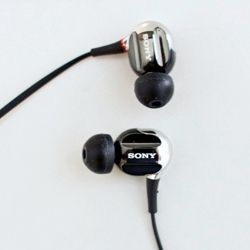
In 2012, Sony introduced their very first in-ear product-line to utilize balanced armature drivers. This product-line is known as the XBA line. While they released several different XBA models at different price-points, it was the quad-driver model, which was to be the most highly anticipated within the audiophile community.
The XBA-4 is Sony's newest flagship in-ear model. To my knowledge, it is the one of only two quad-driver universal-fit IEM currently available; the other being the Westone 4. However, unlike the Westone 4, which incorporates dual bass drivers, the XBA-4 has a single bass driver and a single driver dedicated to sub-bass frequencies. I pre-ordered the XBA-4, but shortly after it arrived, Sony sent headphones.com a sample of the entire XBA-line. When I had the chance to spend time with each of the earphones, I discovered that I actually found that the XBA-3 sounded better to me. The XBA-4 is brighter and a bit sharper. It seems to me that the XBA-4's sound signature is more revealing than that of the XBA-3, but at the same time the XBA-3 sounds more natural and balanced. If I had known that I was going to be given the opportunity to review the entire series, I probably would have gone with the XBA-3 instead.
*The XBA-4 is offered in two different versions. One comes with an Apple Remote and is known as the XBA-4iP, while the other comes without this feature and is known simply as the XBA-4.
STRENGTHS
DETAILED: The XBA-4 offers a highly detailed sound signature. This type of sound signature is very desirable for classical-music-listening.
IMAGING: The XBA-4 exhibits exceptional imaging abilities. As far as IEMs are concerned, the XBA-4's ability to separate instruments and provide a real sense of roominess is far above average.
CLASSICAL MASTER: The XBA-4 can sound a bit sharp with most popular music, but it excels with classical music. In addition, the XBA-4 tends to sound good with very well-balanced (non bright) recordings.
ISOLATION: The simple fact is that in-ear-monitors are inherently designed with the ability to offer the user superb isolation from outside noise. That said, the XBA-4's enclosures are rather large and cumbersome. It is not entirely easy to get a seal with the XBA-4. However, once the user manages to get a seal, the isolation achieved is very good. Sony offers silicone and foam/silicone hybrid eartips to facilitate the user with this task.
SUPER PORTABLE: With regard to portability, nothing even comes close to IEMs. You can fit the XBA-4 inside a small shirt pocket. Try doing that with an MDR-R10.
EASY TO DRIVE: Like most other IEMs, the XBA-4 is designed with the portable user in mind. An amplifier is not necessary to drive the XBA-4, but I have found that they sound particularly good when paired with my Ray Samuels Audio Hornet connected to my 5th generation iPod Classic. The Hornet gives it a tad more impact than going through the iPod headphone output directly. Part of this has to do with the fact that the iPod's headphone output rolls off the sub-bass frequencies.
STORAGE: The XBA-4 comes with a hard-shell carrying pouch that locks via magnet. This is a massive improvement over the very awkward carrying case that shipped with the EX700LP. This magnet-locking design is especially considerate of the fast-paced user who may accidentally damage the cable while zipping the pouch.
WEAKNESSES
NOT TRANSPARENT: I find that the XBA-4 lacks a sense of smoothness. Ultimately, I find that it does not showcase an extremely transparent sound signature.
MIDS: The midrange here sounds a bit metallic and lacking in transparency. Voices do not always sound natural to my ears.
IEMS' INHERENT SHORTCOMINGS: In my opinion, full-size headphones possess the ability to sound more natural than in-ear headphones. The reason I feel this way is that much like natural acoustic sound, sound waves that emanate from a full-size headphone travel through the entirety of the ear, rather than just the canal. To me, this sense of space makes for a more natural auditory experience. As I've said before, not everyone agrees with me here, but I stand by my assertion.
IEM SOUNDSTAGE: To my ears, the soundstage presentation that IEMs portray is lacking in realism. As I've stated previously, a lot of people happen to like the inside-the-head feeling, but for me, it is not competitive with a full-size headphone's outside-the-head ability.
SIBILANT: The XBA-4 is not overtly sibilant. However there are moments when I find that the earphones can border on problematically-sibilant.
CONSTRUCTION: I do not like the ergonomic design of any of the Sony in-ears that I've tried. I find that the earpieces do not sit particularly snug in the ear. It is especially difficult to get a seal with the XBA-4 due to the fact that the earpieces are quite large. Furthermore, I detest when manufacturers design their earphones with the cable worn straight down (as is the case here), rather than behind the ear. By wearing the cable straight down, the cable is guaranteed to be microphonic.
CABLE: Sony really misses the mark when it comes to cable design. If you're an audio purist like me, you will prefer using the earphones without the Apple remote (especially should you have the intention of using it with a dedicated headphone amplifier). However, should you opt for the XBA-4 without Apple remote you may end up regretting your decision (as I have). The reason for my regret is that the XBA-4 (without remote) features an extremely awkward cable design, where the left and right earpieces are connected to one another unevenly. The XBA-4iP features the more common (and much less awkward) Y-split cable design. I do not like the uneven-cable-split at all. Lastly, my final complaint is that all of the models within the XBA series feature non-detachable cables.
ON THE FENCE
TONAL BALANCE: The XBA-4 exhibits a neutral-ish tonality but it doesn't quite hit the mark of neutrality. It is a little bass deficient, particularly if you find getting a seal with it to be as much of a task as I do. Furthermore, the midrange is not entirely natural-sounding. All in all, the tonal balance is very good, but not outstanding.
BASS: The XBA-4's bass extends rather deep. When one is able to get a proper seal with the XBA-4, the bass is quite impactful; if not, the bass presentation sounds a bit lean. I actually found the XBA-3's bass presentation to be a bit more impactful, particularly in the mid-bass region. Part of the reason for this difference may be due to the fact that I found that the XBA-3 was easier to fit inside my ear.
TREBLE: The XBA-4's treble presentation is wonderfully extended, however it exhibits moments of grain and edginess.
FOR THE PRICE
C
Apart from this review, I evaluated the XBA-4 not too long ago. In this previous review, I gave the XBA-4 a value rating of 8.5 out of 10. This differs significantly from the C rating which I am awarding it here. The reason for this notable difference is due entirely to the fact that in this review I am comparing it against all types of headphones; not just in-ears. Although the XBA-4 shows itself to be an improvement over the EX700LP, I still feel that Sony has yet to address the awkwardness of their ergonomic in-ear designs. While the XBA-4 does not perform poorly, I can't help but suggest that the XBA-3 will be preferable to a large amount of listeners. It is for this reason that I cannot give it a value grade any higher than a C. Had the XBA-3 been included in this evaluation, I would have awarded it a grade of B or B- with regards to its price-to-performance ratio.QUICK CHECK
- DESIGN: In-Ear
- DRIVERS: Balanced Armature
- IMPEDANCE: 8 Ohms
- ISOLATION: Extreme
- AMPLIFICATION: Not Necessary but Worth Considering
- MY PREFERRED AMP: AMP: Ray Samuels Audio Hornet
- SOUNDS BEST WITH: Classical Music / Well-Recorded Music
- CABLES USED: Stock
- REVISIONS KNOWN: None known to me
- FLAGSHIP STATUS: : Currently Is Specific To Product-Line
- PRODUCTION STATUS AS OF 2012: In Production
- COST: $349.99 (without Apple Remote) 369.99 (with Apple Remote)
*Back To The Index
[/size]#54 ULTRASONE: HFI-700
[size=0.85em]*Back To The Index[/size]
[size=0.85em] [/size]
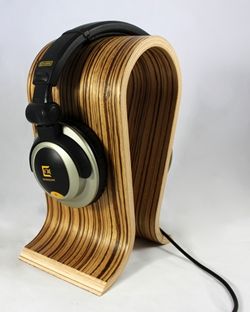
Of all the headphones that I own, the HFI-700 is the only one which is regularly not in my home. I keep it at the small space where my band rehearses. When we are recording, I like to use this headphone specifically for monitoring drums. Much of this has less to do with the sound quality and more to do with the fact that my HFI-700 is roughed-up after years of use.
The HFI-700 was my introduction to Ultrasone. At the time which I purchased it (I think around 2005), I really enjoyed its sonic presentation. In many ways, I still think it provides an exceptionally fun listen. The HFI-650 happened to be an earlier model, but I am told that it is sonically identical to the HFI-700. Today, Ultrasone continues their HFI series, with the HFI-780 being the HFI-700's distant relative.
[size=0.85em] [/size]
[size=0.85em] [/size]
[size=0.85em] [/size]
[size=0.85em]STRENGTHS[/size]
[size=0.85em]FUN TONALITY: I have always enjoyed the HFI-700's sound for casual listening. It offers a tremendous mid-bass hump, as well as a recessed upper mid presentation. Perhaps the most problematic area of the frequency response is the loose bass. In fact, out of all the headphones in my collection, the HFI-700 probably resembles the typical hip-hop headphone of today. However, unlike most of these consumer-grade headphones, the HFI-700 offers tremendous treble extension. I am not convinced that any particular region of the frequency response here is exemplary, yet the overall tonality is very enjoyable to me.[/size]
[size=0.85em] [/size]
[size=0.85em]HIP HOP & R&B MASTER: I love listening to hip hop, modern r&b and classic soul with the HFI-700. It has a visceral sound due to a looser bass response. I find that this bass presentation has a tendency to clutter up the mix when listening to rock, jazz and especially classical music.[/size]
[size=0.85em] [/size]
[size=0.85em]ISOLATION: One of my favorite aspects of the HFI-700 is its ability to seal really well. Of course, it does happen to showcase a closed-back design (closed-back headphones typically provide isolation). However, even when compared with most other closed-back headphones, it ends up in a high place on the totem pole of isolation.[/size]
WEAKNESSES
[size=0.85em]LACKS TRANSPARENCY: The HFI-700 lacks a sense of realism when compared against higher-end headphones. However, when compared with similarly-priced closed-back headphones, the HFI-700 actually fares quite well in the transparency department.[/size]
[size=0.85em] [/size]
[size=0.85em]NOT NEUTRAL: The HFI-700 has an extremely colored/fun tonality. In my opinion, it is not suited for critical listening.[/size]
[size=0.85em] [/size]
[size=0.85em]MIDS: The HFI-700's midrange showcases some unnatural peaks and dips. Sometimes it is easy to overlook this flaw because it is not so extreme. However once one listens to a headphone that offers an extremely pure sounding midrange, the HFI-700 can sound odd.[/size]
[size=0.85em] [/size]
[size=0.85em]COMFORT: Very early on, the HFI-700's faux leather earpads began to harden and crack. As the earpads continued to harden, I found that the HFI-700 went from being fairly comfortable to physically fatiguing.[/size]
[size=0.85em] [/size]
[size=0.85em]CABLE: The HFI-700 features a one-sided hardwired cable. This style is not my preference. I prefer a Y-split detachable cable design because it allows the headphone to be easily re-cabled for balanced application. [/size]
ON THE FENCE
[size=0.85em]BASS: Of all the headphones listed in this evaluation, I might suggest that the HFI-700's bass presentation is the least tight. However, the actual feel of the bass is very full and enjoyable for certain types of music.[/size]
[size=0.85em] [/size]
[size=0.85em]SOUNDSTAGE: As far as closed-back headphones are concerned, the HFI-700's soundstage is impressive. It is wider than I typically expect from a closed-back headphone. However, it still possesses the closed-in feeling which seems to be an inherent side-effect of closed-back headphone design.[/size]
[size=0.85em] [/size]
[size=0.85em]TREBLE: I appreciate how forward the treble is here. It helps the sonic presentation remain uncluttered despite the loose bass response. On the other hand, the treble here is not particularly grain-free.[/size]
[size=0.85em] [/size]
[size=0.85em]AMPING: In truth, the HFI-700 is not a difficult headphone to drive. Yet I think the sound is greatly improved when paired with a neutral solid-state amp. When I pair it with the SPL Phonitor for instance, the soundstage opens up quite a bit and the bass feels slightly more controlled.[/size]
FOR THE PRICE
[size=0.85em]C[/size]
[size=0.85em]If you had asked me in 2005 (when the HFI-700 was still new to me) what I thought of it, I would have most certainly given it a B or B+. I thought a lot of this headphone at the time. Of course I had far fewer headphones to compare it with. Over time my allegiance towards it has faded. However, it does carry the designation of being the headphone for which I've held on to the longest besides the Denon AH-D950. As far as closed-back headphones are concerned, I think the HFI-700 was a solid offering in its time. I do however wish that the earpads were made of a more supple/durable material.[/size][size=0.85em] [/size]
[size=0.85em] [/size]
QUICK CHECK
- DESIGN: Full-Size
- DRIVERS: Dynamic
- IMPEDANCE: 75 Ohms
- AMPLIFICATION: Recommended
- ISOLATION: EXTREME
- MY PREFERRED AMP: SPL Phonitor
- SOUNDS BEST WITH: Hip Hop / R&B / Soul
- CABLES USED: Stock
- REVISIONS KNOWN: None known to me
- FLAGSHIP STATUS: Never Was
- PRODUCTION STATUS AS OF 2012: Out Of Production
- COST: $150 (estimated)
[size=0.85em]*Back To The Index[/size]
#53 SHURE: SE530
[size=0.85em] *Back To The Index
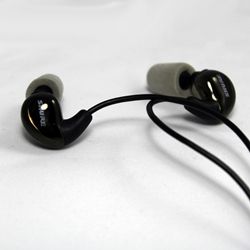
Like many longtime headphone companies, Shure Inc. began as a manufacturer of radio parts and microphones. In the late 90's, Shure entered the listening device market, specializing exclusively in earphones and personal monitoring components. As far as I am aware, Shure is the only manufacturer thus far to have started out as a maker of earphones, only to add full-size headphones to their product-line later. Usually it is the other way around.
For a long time now, I have considered the SE530's sonic character to be demonstrative of what a forward midrange presentation sounds like. Ironically, the SE530's midrange presentation may be its greatest asset to some and its most bothersome liability to others. I personally hold the SE530's sound in fairly high regard even though I feel that there are several IEMs which fare better overall.
I should mention here that Shure's newer triple driver model, the SE535, is viritually identical to the SE530. As a result, the SE530s have been discontinued. I have decided to review the two models separately since there are some very slight, yet distinct differences between them. However, if you already own the SE530, I do not feel it is worth the cost of upgrading to the SE535.
STRENGTHS MIDS: I truly adore the SE530's midrange presentation. It's so smooth and grain-free. For a time, it was this midrange presentation which made the SE530 my favorite universal-fit IEM.
MALE VOCALS: I've found that the SE530's lush midrange enhances the sound of the male voice. Here, male vocals sound thick and come forward with great presence and depth.
COMFORT: In the mid-2000's, Shure introduced a foam ear-tip that resembled the shape of an olive. The SE530 came pre-installed with these tips already on the nozzle. This ear-tip manages to provide a good seal and is relatively comfortable. Although Shure generously included an assortment of silicone and foam ear-tips in addition, I have found that most users prefer the "olive tips."
ISOLATION: Once the ear-tip is properly sealed in the ear canal, the SE530 is able to block out quite a bit of ambient noise. It is not quite as impressive in this regard as Westone's universal-fit IEMs. The Westone models are designed to utilize Comply foam tips. Of course, Comply makes foam tips which are compatible with the SE530 (as shown in the photo above). However, I have often found that the SE530's sonic presentation is affected negatively by the Comply tips. The Comply tips seem to exaggerate the SE530's rolled-off high-end.
JAZZ MASTER: Jazz sounds sultry and smooth with the SE530, particularly the old bop records which exhibit an excess of analog hiss and record pops.
EASY TO DRIVE: As is the case with most IEMs, the SE530 is extremely efficient and easy to drive. However I do prefer the earphone's sonic presentation when paired with a neutral solid-state amplifier. I find that in doing this, the treble is brought forward a bit.
SUPER PORTABLE: With regard to portability, nothing even comes close to IEMs. You can fit the SE530 inside a small shirt pocket. Try doing that with an SRH1840.
FORGIVING: The SE530 is one of the most forgiving of all the headphones/earphones reviewed in this evaluation. This is most certainly a pleasant side-effect of the rolled off treble response.
STORAGE: I think Shure did an extremely good job at packaging the SE530. Much like Apple's lauded packaging displays, the SE530 was packaged in a compact yet succinct manner. Thankfully, the SE535 continues this tradition. Perhaps, the most important accessory included with the SE530/5 is the protective zippered carrying pouch. I like this case very much. I have used it to store several of my other earphones in addition to the SE530.
WEAKNESSES
TREBLE: The SE530's treble presentation is enormously rolled-off. At times, this causes the sonic presentation to sound congested and muddy. When I first heard the SE530, I was taken aback by the absence of treble. While the earphones have a very smooth sound, I cannot help but wish for more treble presence and greater extension.
LACKS DETAIL: If I attempt to listen to classical music with the SE530, I feel as though my ears are squinting to hear the upper harmonics. Simply put, the SE530 is truly not a detailed sounding earphone.
IEMS' INHERENT SHORTCOMINGS: In my opinion, full-size headphones possess the ability to sound more natural than in-ear headphones. The reason I feel this way is that much like natural acoustic sound, sound waves that emanate from a full-size headphone travel through the entirety of the ear, rather than just the canal. To me, this sense of space makes for a more natural auditory experience. Not everyone agrees with me on this matter, but I stand by my assertion.
IEM SOUNDSTAGE: To my ears, the soundstage presentation that IEMs portray is lacking in realism. A lot of people happen to like it, but for me, it is not competitive with a full-size headphone's soundstaging ability.
IMAGING: I find that the SE530's sonic presentation is squeezed toward the center. Perhaps, because of the absence of upper-harmonics, the sound feels slightly smeared and cluttered.
CABLE: The most distinct difference between the SE530 and SE535 is that the SE530's cable is hardwired while the SE535 features a user-detachable cable. The latter is clearly the more durable design. I know several SE530 owners (including myself) who have had the misfortune of the cable tearing at precisely where the cable connects to the earpiece. It was a terribly fragile design. Shure was wise to address this issue when designing the SE535.
ON THE FENCE TONAL BALANCE: I feel ambivalent about the SE530's tonal balance. I really do think the SE530's mid-centric tone enhances the sound of jazz music. At the same time, when it comes to classical music, the missing upper-harmonics makes the music sound as though it is submerged.
BASS: The bass response here is well-extended and fairly flat. Unfortunately however, I find that it is not as impactful as I would prefer.
FOR THE PRICE
C
The SE530 is the only headphone/earphone in this entire evaluation to have been superseded by a virtually identical replacement: the SE535. For this reason, I would only recommend purchasing the SE530 at an extremely attractive price. The SE535 is a better purchase because it addresses the cable issue discussed above. Either way, the SE530 serves as phenomenal earphone for one who loves a lush forward midrange.QUICK CHECK
- DESIGN: In-Ear
- DRIVERS: Balanced Armature
- IMPEDANCE: 36 Ohms
- ISOLATION: Little to None
- AMPLIFICATION: Not Necessary but Worth Considering
- MY PREFERRED AMP: SPL Phonitor / Ray Samuels Audio Hornet
- SOUNDS BEST WITH: Male Vocals / Jazz
- CABLES USED: Stock
- REVISIONS KNOWN: At least one known to me
- FLAGSHIP STATUS: Once Was
- PRODUCTION STATUS AS OF 2012: Out Of Production
- COST: $300-$500 (estimated)
*Back To The Index
[/size]
#52 SHURE: SE535
[size=0.85em]*Back To The Index[/size]
[size=0.85em] [/size]
[size=0.85em]
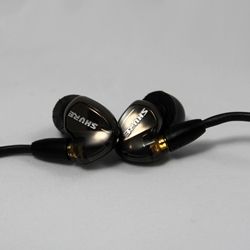
In 2011, Shure discontinued the SE530, replacing it with the SE535. The two earphones are almost identical with regard to their overall sonic presentations. However, there is a very slight difference with regard to how the two models handle treble; the SE535 offers just a hint more. Yet it is not really this difference which compels me to favor the SE535. The main reason that I prefer the SE535 is due to the detachable cable design. I owned an SE530 which became unusable after the cable began to experience problems. Upon sending my faltering SE530 to Shure for repair, they replaced it with the SE535. Because of the fact that the SE535 has a detachable cable, using it is a far less worrisome experience than using the SE530. The SE535 is offered in two finishes: clear and metallic bronze. I really like the appearance of the bronze finish.
In the nature that SE535 was the direct replacement of the SE530, I should mention here that my review of the SE535 will read quite similarly to my review of the SE530 (directly above).
STRENGTHS
[size=0.85em]MIDS: I truly adore the SE535's midrange presentation. It is so smooth and grain-free. For a time, it was this midrange presentation which made the SE535 my favorite universal-fit IEM.[/size]
[size=0.85em] [/size]
[size=0.85em]MALE VOCALS: I've found that the SE535's lush midrange enhances the sound of the male voice. Here, male vocals sound thick and come forward with great presence and depth.[/size]
[size=0.85em] [/size]
[size=0.85em]COMFORT: In the mid-2000's, Shure introduced a foam ear-tip that resembled the shape of an olive. The SE535 comes pre-installed with these tips already on the nozzle. This ear-tip manages to provide a good seal and is fairly comfortable. While Shure generously includes a variety of silicone and foam ear-tips in addition, I have found that most users prefer the "olive tips."[/size]
[size=0.85em] [/size]
[size=0.85em]ISOLATION: Once the ear-tip is properly sealed in the ear canal, the SE535 is capable of blocking out quite a bit of ambient noise. It is not quite as impressive in this regard as Westone's universal-fit IEMs. The Westone models are designed to utilize Comply foam tips. Of course, Comply makes foam tips which are compatible with the SE535. However, I do find that the SE535's sonic presentation is affected negatively by the Comply ear-tips. The Comply foam seems to exaggerate the SE535's rolled-off treble.[/size]
[size=0.85em] [/size]
[size=0.85em]JAZZ MASTER: Jazz sounds sultry and smooth with the SE535, particularly the old bop records which exhibit an excess of analog hiss and record pops.[/size]
[size=0.85em] [/size]
[size=0.85em]EASY TO DRIVE: As is the case with most IEMs, the SE535 is extremely efficient and easy to drive. However I do prefer the earphone's sonic presentation when paired with a neutral solid-state amplifier. I find that in doing this, the treble is brought forward a bit.[/size]
[size=0.85em] [/size]
[size=0.85em]SUPER PORTABLE: With regard to portability, nothing even comes close to IEMs. You can fit the SE535 inside a small shirt pocket. Try doing that with a SRH1840.[/size]
[size=0.85em] [/size]
[size=0.85em]FORGIVING: The SE535 is one of the most forgiving of all the headphones/earphones reviewed in this evaluation. This is most certainly a pleasant side-effect of the rolled off treble response.[/size]
[size=0.85em] [/size]
[size=0.85em]STORAGE: I think Shure did an excellent job in packaging the SE535. Resembling Apple's highly-praised packaging displays, the SE535 is packaged in a compact yet succinct manner. Perhaps, the most important accessory included with the SE535 is the oval-shaped protective zippered carrying pouch, which zips up to stay closed. I like this case very much. I have used it to store several of my other earphones in addition to the SE535.[/size]
[size=0.85em] [/size]
[size=0.85em]CABLE: The biggest difference between the SE530 and SE535 is that the former has a hardwired cable (susceptible to tearing) while the latter has a much more durable user-detachable cable. According to Shure, that is the most distinct difference between the SE530 and SE535.I know several SE530 owners (including myself) who have had the misfortune of the cable tearing at precisely where the cable connects to the earpiece. It was a terribly fragile design. Shure was smart to address this issue when designing the SE535.[/size]
WEAKNESSES
[size=0.85em]TREBLE: A lot of people claim that the SE535's treble response is improved over the SE530's. The manufacturer claims that the SE535's driver construction is identical to that of the SE530. Therefore, any discernible changes regarding the SE535's treble presentation must be an aftereffect of its slightly different ergonomic fit. With the SE535, I have confirmed that the treble is brought forward to a nearly imperceptible degree. I still find the SE535's treble to be significantly rolled off. At times, this causes the sonic presentation to sound congested and muddy.[/size]
[size=0.85em] [/size]
[size=0.85em]LACKS DETAIL: If I attempt to listen to classical music with the SE535, I feel as though my ears are squinting to hear the upper harmonics. Simply put, the SE535 is truly not a detailed sounding earphone.[/size]
[size=0.85em] [/size]
[size=0.85em]IEMS' INHERENT SHORTCOMINGS: In my opinion, full-size headphones possess the ability to sound more natural than in-ear headphones. The reason I feel this way is that much like natural acoustic sound, sound waves that emanate from a full-size headphone travel through the entirety of the ear, rather than just the canal. To me, this sense of space makes for a more natural auditory experience. Not everyone agrees with my claim here, but I stand by my assertion.[/size]
[size=0.85em] [/size]
[size=0.85em]IEM SOUNDSTAGE: To my ears, the soundstage presentation that IEMs portray is lacking in realism. A lot of people happen to like it, but for me, it is not competitive with a full-size headphone's soundstaging ability.[/size]
[size=0.85em] [/size]
[size=0.85em]IMAGING: I find the SE535's sonic presentation to be squeezed toward the center, meaning in this case that is lacks a bit of left/right dimension. Perhaps, because of the absence of upper-harmonics, the sound feels slightly smeared and cluttered.[/size]
ON THE FENCE
[size=0.85em]TONAL BALANCE: I have mixed feelings regarding the SE535's tonal balance. I really do think the SE535's mid-centric tone enhances the sound of jazz music. At the same time, when it comes to classical music, the absence of upper-harmonics causes the music to sound as though it is submerged.[/size]
[size=0.85em] [/size]
[size=0.85em]BASS: The SE535's bass response is well-extended and fairly flat. Unfortunately however, I find that it is not as impactful as I would prefer. For those who wish to get more bass from their SE535, try using Compy foam ear-tips in place of the included Shure foam tips. However, I found that an unfortunate consequence of using these ear-tips is that the treble presence is slightly diminished.[/size]
FOR THE PRICE
[size=0.85em]C[/size]
[size=0.85em]The SE535 is a fantastic choice for fans of older recordings that wish to screen out some of the analog hiss. From a sonic perspective, the SE535 is virtually identical to the SE530. In addition, the SE530 was sonically identical to the E500. In essence, one can say that the sound signature of the SE535 has been around for many years. During this time, it has remained favored by many who prefer a forgiving sound presentation. Fortunately for everyone, Shure addressed the SE530's fragile cable problem when they designed the SE535.[/size][size=0.85em] [/size]
[size=0.85em] [/size]
QUICK CHECK
- DESIGN: In-Ear
- DRIVERS: Balanced Armature
- IMPEDANCE: 36 Ohms
- ISOLATION: Little to None
- AMPLIFICATION: Not Necessary but Worth Considering
- MY PREFERRED AMP: SPL Phonitor / Ray Samuels Audio Hornet
- SOUNDS BEST WITH: Male Vocals / Jazz
- CABLES USED: Stock
- REVISIONS KNOWN: None known to me
- FLAGSHIP STATUS: Currently Is Specific To Product-Line
- PRODUCTION STATUS AS OF 2012: In Production
- COST: $499.99
[size=11.199999809265137px]*Back To The Index[/size]
[size=0.85em] [/size][size=0.85em] [/size]
[size=0.85em] [/size]
[size=0.85em] [/size]
#51 WESTONE: WESTONE 3
[size=0.85em] *Back To The Index
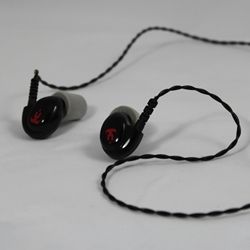
Westone started out as a pioneer in the field of hearing care. Later they would become one of the key figures in the evolution of in-ear-monitors during the 1990's. Westone served as an OEM (original equipment manufacturer) for Shure and worked alongside Ultimate Ears in the development of the world’s first custom-fit in-ear headphone.
Introduced in 2008, the Westone 3 was the very first two-way crossover universal-fit IEM. Essentially, what this means is that there are three balanced armature drivers in the earpiece, each targeted at a different frequency region (lows, mid, highs). Other triple-driver IEMs which preceded the Westone 3 (such as the SE530 and Ultimate Ears' Triple Fi 10 Pro) featured dual drivers for lower frequencies and a single driver for the highs. When I heard the Westone 3 for the first time, I was struck by how full the sound was. In my opinion, it offers a significantly improved sound over their dual-driver model, the UM2. Shortly after acquiring the Westone 3, I began to prefer them to the SE530.
STRENGTHS TONALITY: The Westone 3 offers a fun tonality that features an impactful mid-bass response and decent treble extension. In contrast to the SE535's bloomy midrange, the Westone 3's mids are slightly recessed.
BASS: The Westone 3 demonstrates a rather noticeable mid-bass hump that adds quite a bit of depth to bass guitar and drums. I find that its bass presentation is ideally suited for rock and metal music.
COMFORT: For me, the ergonomic design of Westone's universal-fit IEMs is the most comfortable of all universal-fit in-ears. The angle of the nozzle allows the user to achieve a more comfortable seal. In addition, Westone ships their universal-fit IEMs with Comply brand foam ear-tips. These tips are extraordinarily comfortable and easily provide the best seal of all the ear-tips that I have used.
ISOLATION: While Westone ships the Westone 3 with a generous assortment of eartips, I suggest using the longer Comply ear-tips in order to achieve the best seal. Once the foam tips are sealed in the ear, they manage to provide an extreme amount of isolation. Only custom-fitted IEMs do better in this regard.
ROCK MASTER: The Westone 3 offers a genuinely fat sound with great impact. I really enjoy listening to rock (particularly modern rock) with the Westone 3.
SUPER PORTABLE: With regard to portability, nothing even comes close to IEMs. You can fit the Westone 3 inside a small shirt pocket. Try doing that with an MDR-R10.
EASY TO DRIVE: I have found that the Westone 3 really doesn't benefit much from amplification. It sounds almost the same out of an iPod as it does out of a high-end rig.
STORAGE: When Westone began shipping the Westone 3, they supplied a round hard zippered carrying case, which resembled Shure's carrying case. However, more recently Westone has switched to a longer, more rectangular zippered carrying case. Both of the carrying cases offered are extremely effective with regard to fitting in the pocket and protecting the IEMs from damage.
WEAKNESSES
IEM'S INHERENT SHORTCOMINGS: In my opinion, full-size headphones possess the ability to sound more natural than in-ear headphones. The reason I feel this way is that much like natural acoustic sound, sound waves that emanate from a full-size headphone travel through the entirety of the ear, rather than just the canal. To me, this sense of space makes for a more natural auditory experience. Not everyone agrees with this claim, but I stand by my assertion.
IEM SOUNDSTAGE: To my ears, the soundstage presentation that IEMs portray is lacking in realism. A lot of people happen to like it, but for me, it is not competitive with a full-size headphone's soundstaging ability.
NOT NEUTRAL: The Westone 3 is not a neutral-sounding earphone by any means. I would not suggest it as a choice for anyone looking to monitor a live mix. I would opt for the UM3X or Westone 4 in this scenario.
IMAGING: The Westone 3 is not particularly impressive with regard to imaging. Even though I enjoy the bass presentation, sometimes I feel as though the extra bass emphasis gets in the way of pinpointing the placement of instruments.
SIBILANT: The Westone 3 has the tendency to emphasize the sharpness of the letter "s" and other percussion instruments such as a hi-hat which fall into that same frequency region.
ON THE FENCE TRANSPARENT?: I feel as though the Westone 3's sound-signature is on the cusp of transparency, but it doesn't quite make it.
MIDS: I would prefer a slightly more forward midrange. However, the mids here are still quite natural-sounding. Overall, the midrange presentation is ideal for those who enjoy a slightly raised bass/treble EQ curve.
TREBLE: When I heard the Westone 3 for the first time, the first thing I thought was that its treble presentation was a drastic improvement over the SE530's. It is certainly more forward. However, I still wish at times that the treble was more smoothly integrated with the midrange.
CABLE: Westone's braided cable design is the best I have seen in the in-ear market. It is rugged, light and avoids tangling. I only wish the Westone 3's cable was detachable from the earpiece. Westone would later offer this as an optional feature with their UM-series models and the Westone 4.
FOR THE PRICE
B-
Upon its debut, the Westone 3 was probably the best sounding universal-fit IEM I had ever heard. Today it has been surpassed by a few models - namely by Westone themselves and Audéo. I still prefer the sound of the Westone 3 to any of Sony's XBA series IEMs. For rock fans, I think the Westone 3 may still be the one to own.QUICK CHECK
- DESIGN: In-Ear
- DRIVERS: Balanced Armature
- IMPEDANCE: 30 Ohms
- ISOLATION: Extreme
- AMPLIFICATION: Not Necessary but Worth Considering
- MY PREFERRED AMP: n/a (iPod without amp)
- SOUNDS BEST WITH: Rock
- CABLES USED: Stock
- REVISIONS KNOWN: None known to me
- FLAGSHIP STATUS: Once Was
- PRODUCTION STATUS AS OF 2012: In Production
- COST: $349
*Back To The Index
[/size]




















